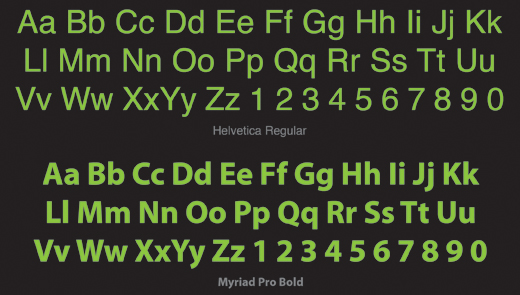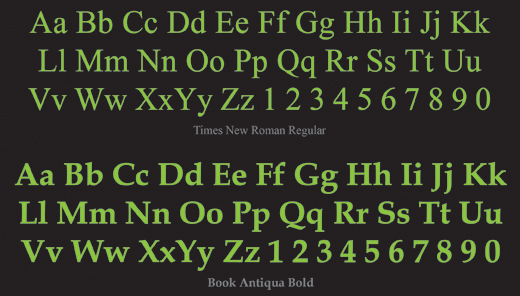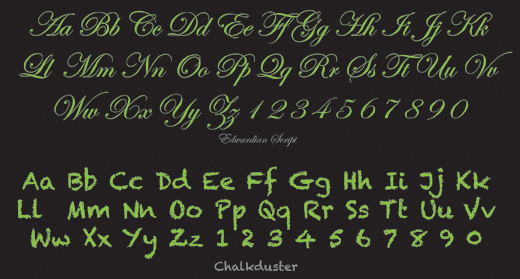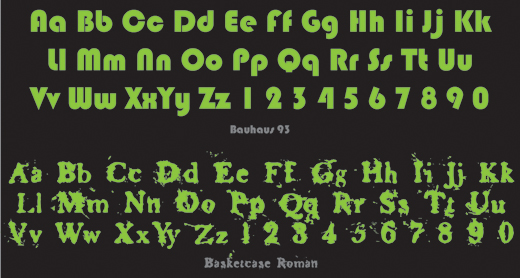As you take on more clients it becomes increasingly difficult to keep accurate track of costs and the hours you should be billing for. Keeping poor records will ultimately start to cost you money, thankfully there are a great selection of tools available to help.
There are more to benefits to these apps than just staying organized. Some of these apps enable small businesses to take the kind of control of their finance that was once just the preserve of big businesses with dedicated accounting departments.
Below we’ve compiled a list showcasing what we believe are the best 20 invoicing tools for web designers/developers in no particular order. However a word of warning’ be sure to choose your app with caution, once you have started using one it can be difficult to migrate if you later encounter limitations. Always sign up to free trials where available and compare a few alternatives before making a decision.

Billing Boss allows anyone from freelancers to a small businesses to quickly and efficiently bill clients with an unlimited number of invoices. This app lets you add as many clients as you need to your database and help you stay organized by instantly saving and cataloging you invoices. Billing Boss seamlessly integrates with Paypal so you can reach clients worldwide with its great support for multiple currencies.

Simple Invoices, a static web-based invoicing application that allows itself to be installed on a web-sever or a Windows PC. It can also be hosted by one of the following service providers as well.
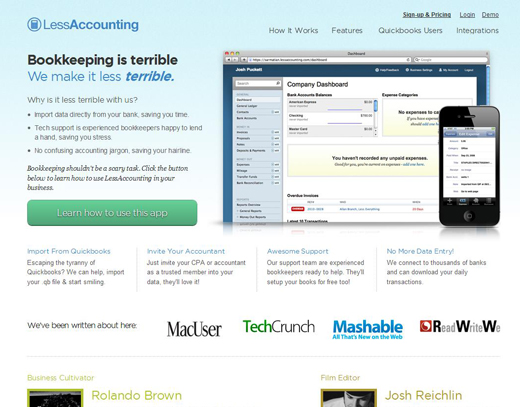
Not only can you invoice but you can easily keep track all of your business expenses with LessAccounting. You can put organize your expenses into categories, add notes and even upload a pictures of your receipts for each expense.
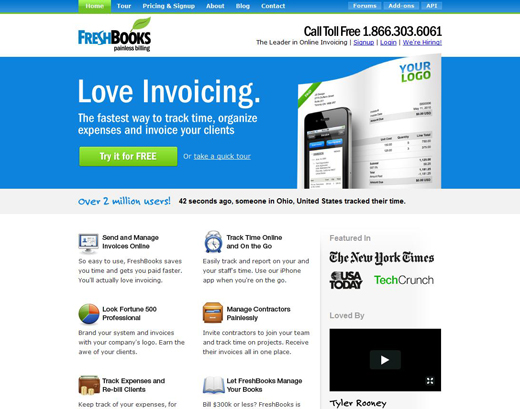
Streamline your business with recurring invoices. Set up auto-billing to automatically charge your client’s credit card. Quickly and easily invoice clients in any currency. Create your invoice, select your currency and you’re done.

Blinksale is a great looking web application that has a powerful feature set. Blinksale has a quaint option that allows you to send invoices via snail-mail, whatever that is! You can also customize your invoices by uploading your very own logo or if you have some time on you hands design your own invoices with CSS.

Billing Manager is a web-based invoicing solution that lets you create invoices, send professional estimates, and helps you get paid online.
In addition to online invoicing and estimates, Billing Manager lets you send PDFs of your invoices, send reminders to your customers, process eChecks, accept all major credit cards online and choose currencies.
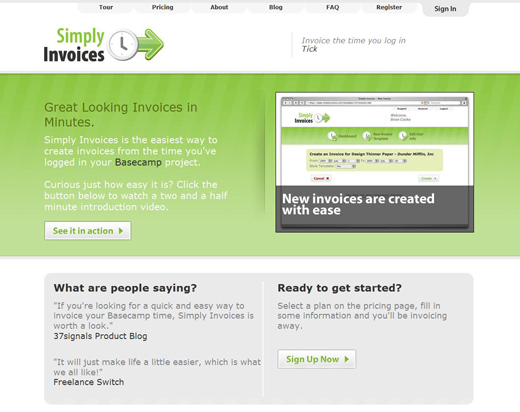
SimplyInvoices integrates seamlessly with Basecamp so you can easily invoice clients the exact amount of time you have spent on a project..
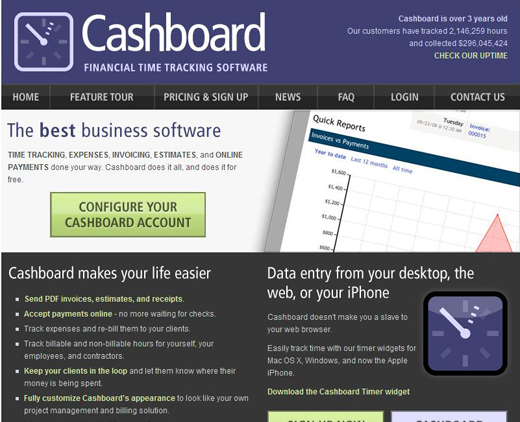
Quickly invoice for time logged against a project, materials, or other goods. Create invoices for your projects with one mouse click, or set up recurring invoices to bill your customers automatically.
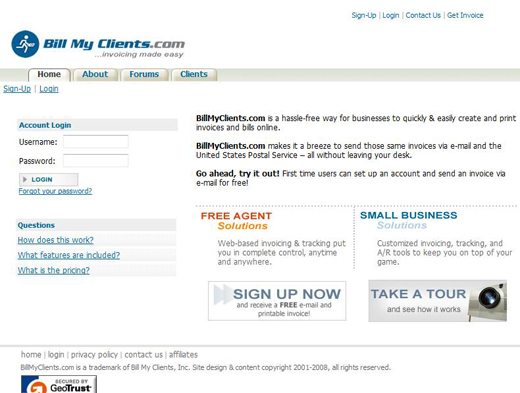
BillMyClients is a hassle-free way for businesses to quickly & easily create and print invoices and bills online. It makes it a breeze to send those same invoices via e-mail and the United States Postal Service – all without leaving your desk.
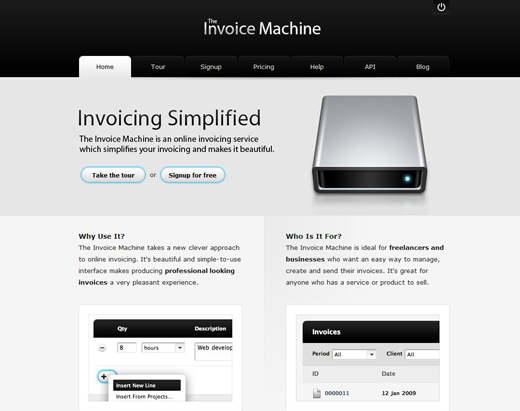
The Invoice Machine takes a new clever approach to online invoicing. It’s beautiful and simple-to-use interface makes producing professional looking invoices a very pleasant experience. Create new invoices in a snap. Set options like currency, taxes, shipping, discounts, language, notes and more.

Invotrak is a full-featured online invoicing and timesheet tracking application that can save you time and money. It’s also includes many of the features you need to speed up your billing tasks.

BillingOrchard provides enterprise electronic billing solutions through a simple, secure interface, supported by top notch service and priced for small businesses.
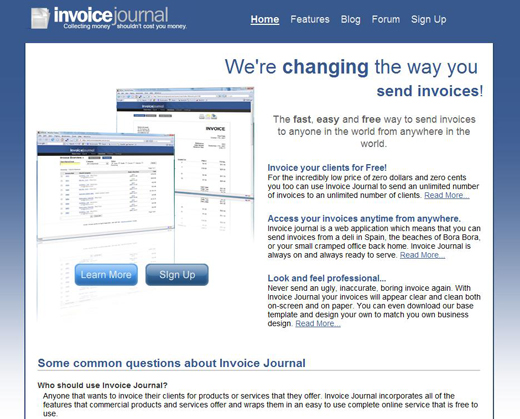
Use the client list to enter your customers into the Invoice Journal system and easily retrieve them later when you need them. When its time to create a new invoice simply type your clients name, company name or email address and Invoice Journal will show you which clients match your criteria.
Browse, sort and search all of you invoices quickly and seamlessly. Since there are no limits or restrictions on the invoices you create there is never a need to delete or archive invoices.
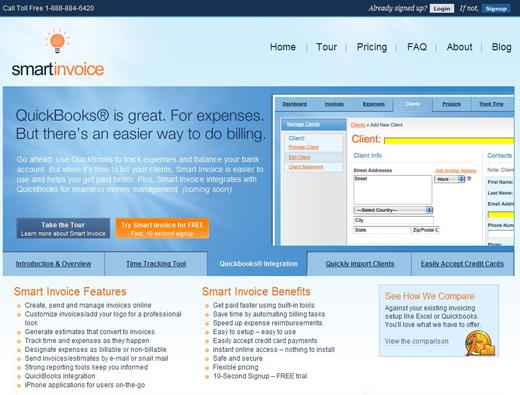
Smart Invoice is an easy to use, full featured, web based billing and time tracking system designed specifically for small businesses, freelancers, and other independent contractors. Use the recurring billing feature to send regular invoices to clients automatically – no extra effort required.
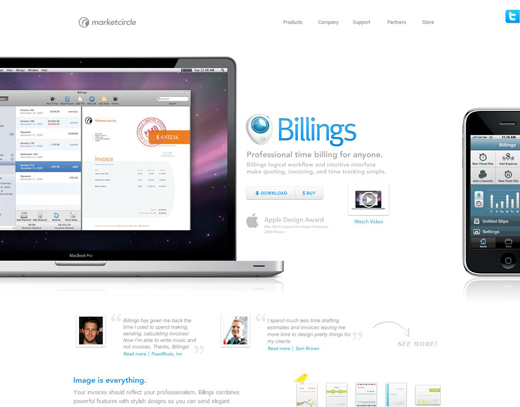
Billings powerful application for the Mac features with stylish designs so you can send elegant invoices right out of the box. Choose from any of the customizable templates, or create your own with the built-in WYSIWYG designer. Either way you’ll send polished professional invoices in seconds. Billings also has a fantastic looking iPhone App.
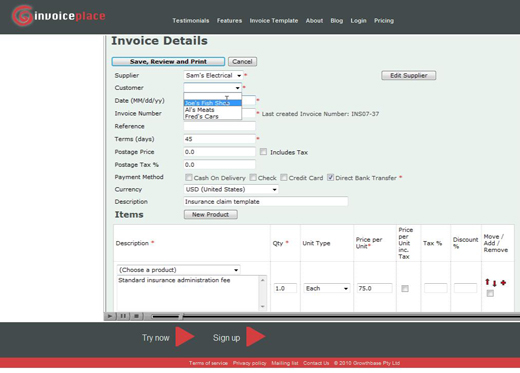
Manage your billing and quotes from the office, home or on the road. Create invoices and quotes for any type of product or service. Use Invoiceplace no matter what you sell be it paint, jumping castles, hardware supplies, or cell phones.
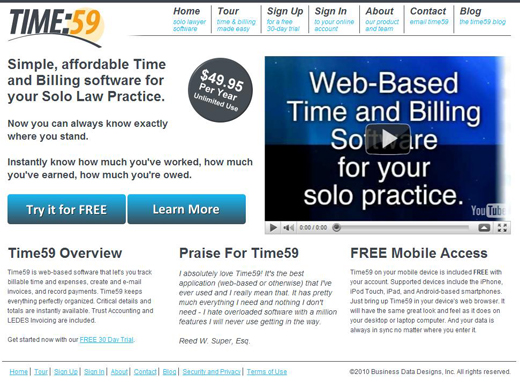
Time59 is web-based software that let’s you track billable time and expenses, create and e-mail invoices, and record payments. Time59 keeps everything perfectly organized. Critical details and totals are instantly available. Time59 on your mobile device is included FREE with your account.

With PaySimple billing and receiving payments is safe for you and your customers, all information is securely stored with 256-bit encryption and SSL protection.
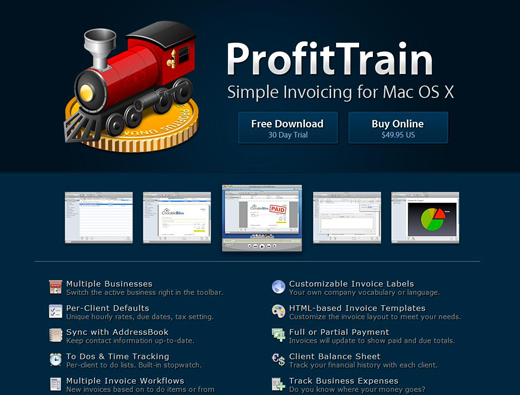
With ProfitTrain you’ll easily be able to keep contact information up to date, store reoccurring services and products, send estimates and export to spreadsheet for more exotic totaling.

Harvest lets you and your staff track time and send invoices from one integrated application. Use Harvest’s visual reports to see the distribution of your company’s resources at a glance. Create an online invoice and easily bill your client. Get paid faster by collecting online payments from your clients instantly and securely via the web.
Do you know of any other invoicing tools that work great for designers/developers? or have any good or bad experiences with any of these apps? Please contribute and share with us what you’ve found.

 What? How do you know it’s vintage? The same way you know a dress is from your mother’s closet because it smells of lavender and it looks like a hit of the 60s party scene.
What? How do you know it’s vintage? The same way you know a dress is from your mother’s closet because it smells of lavender and it looks like a hit of the 60s party scene.